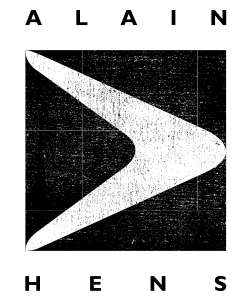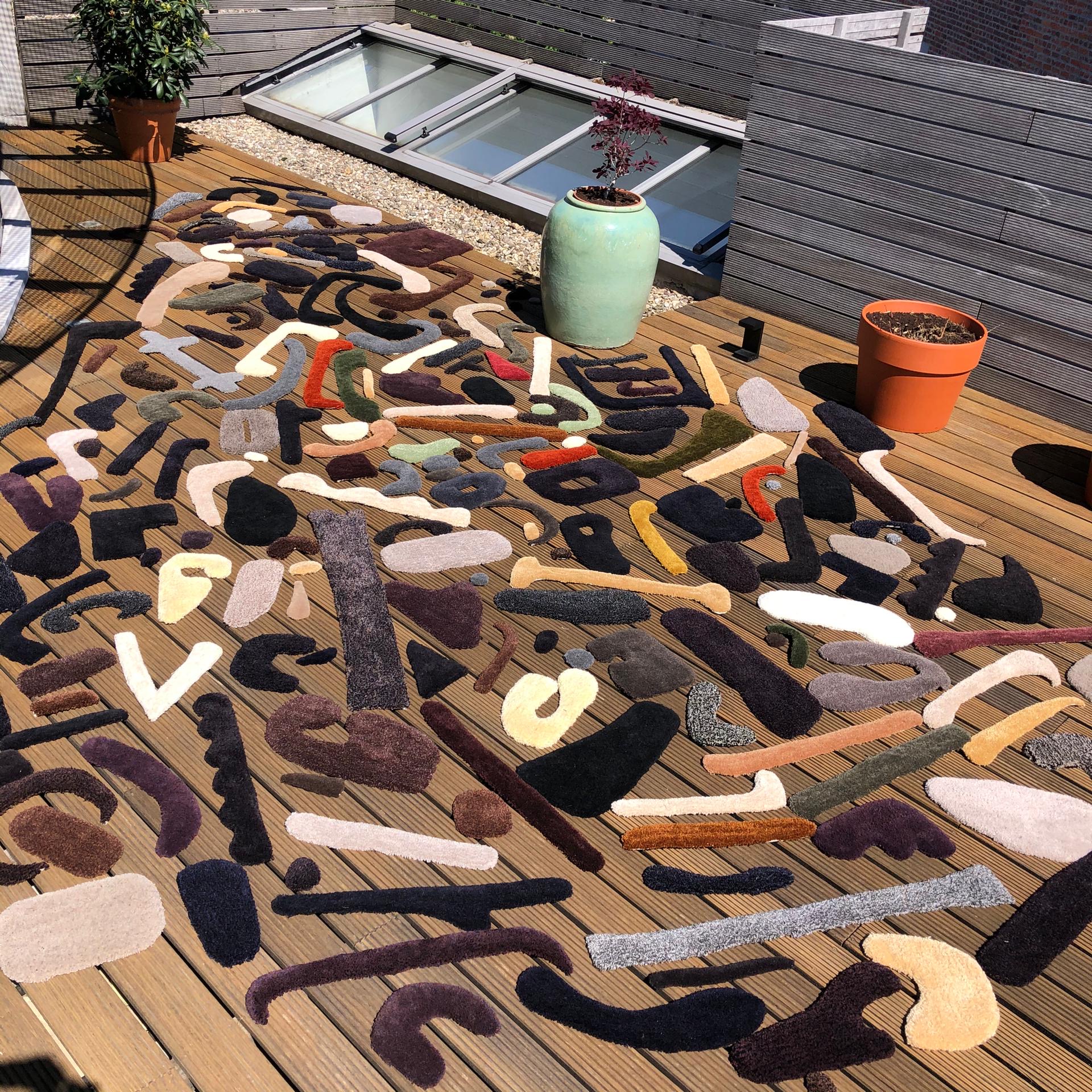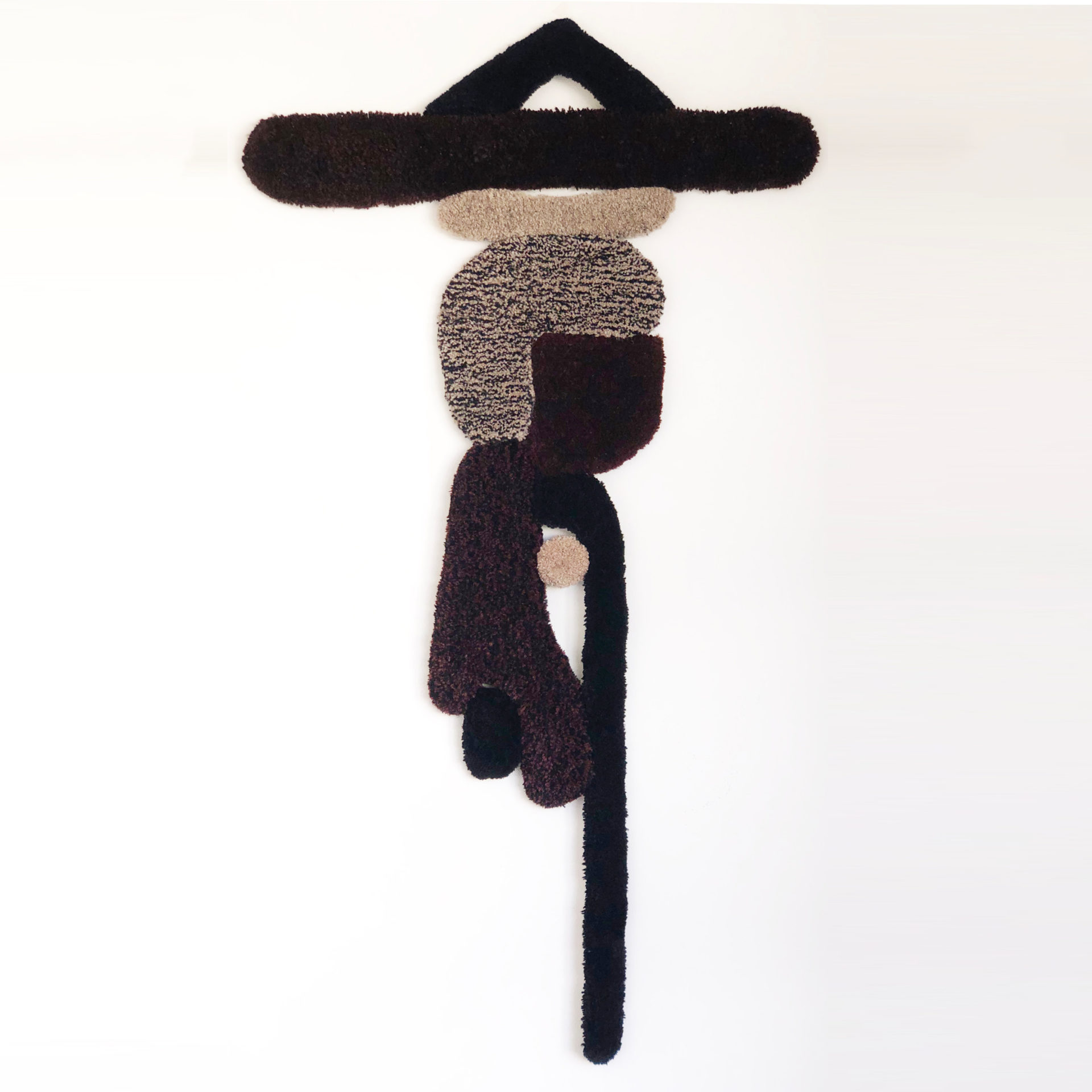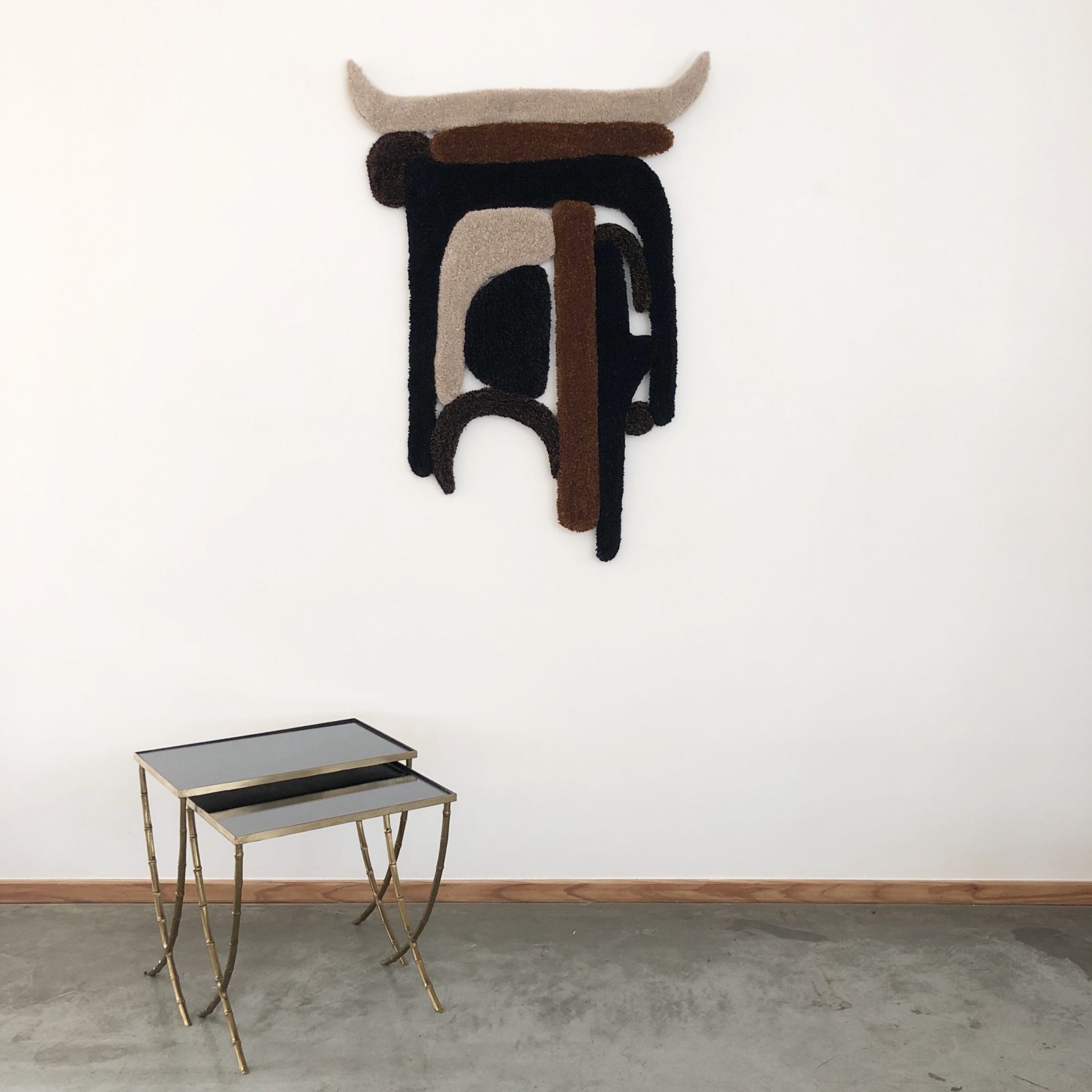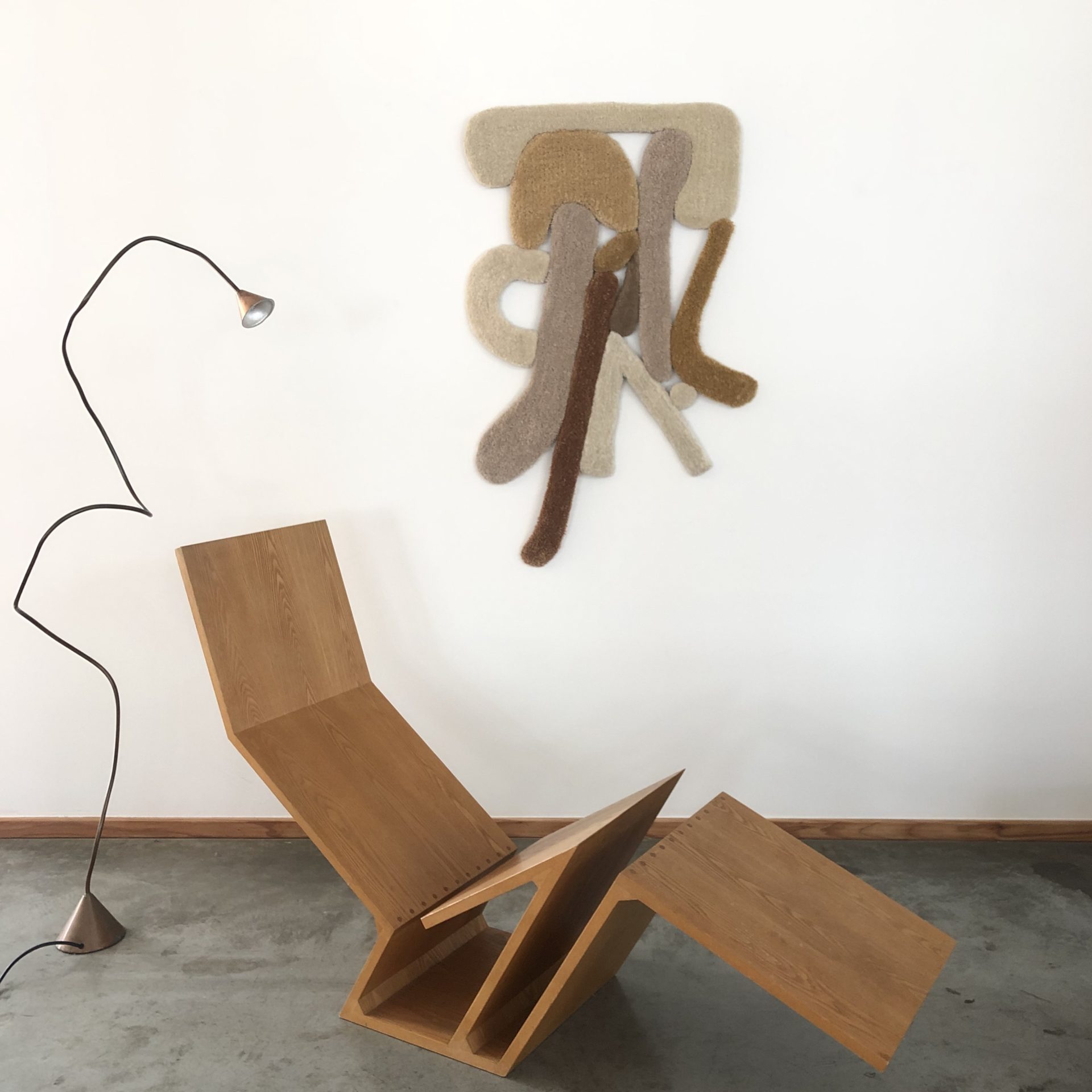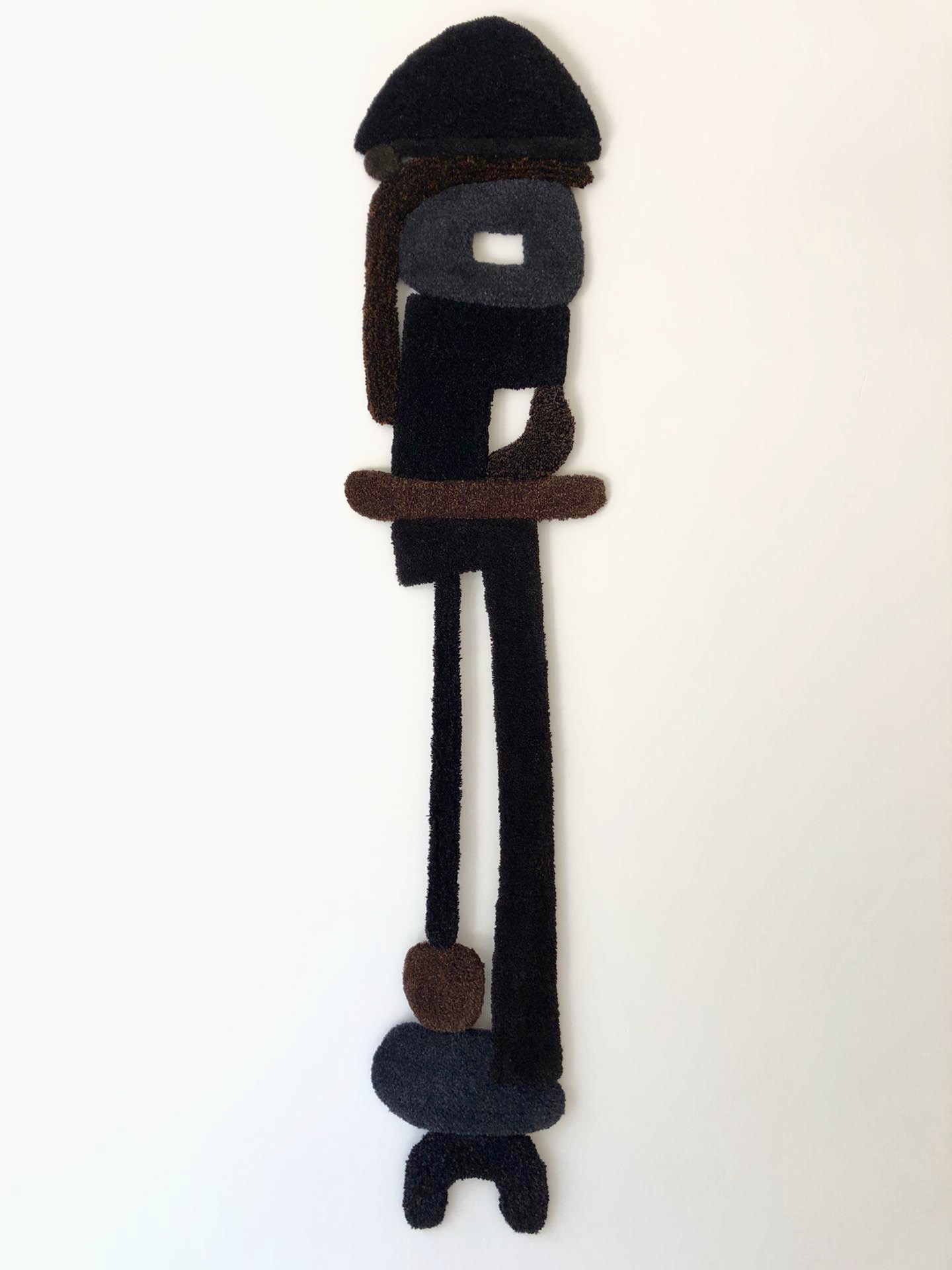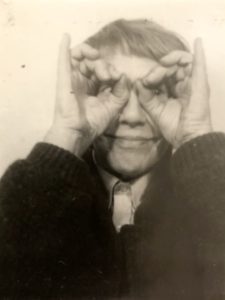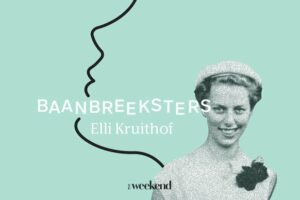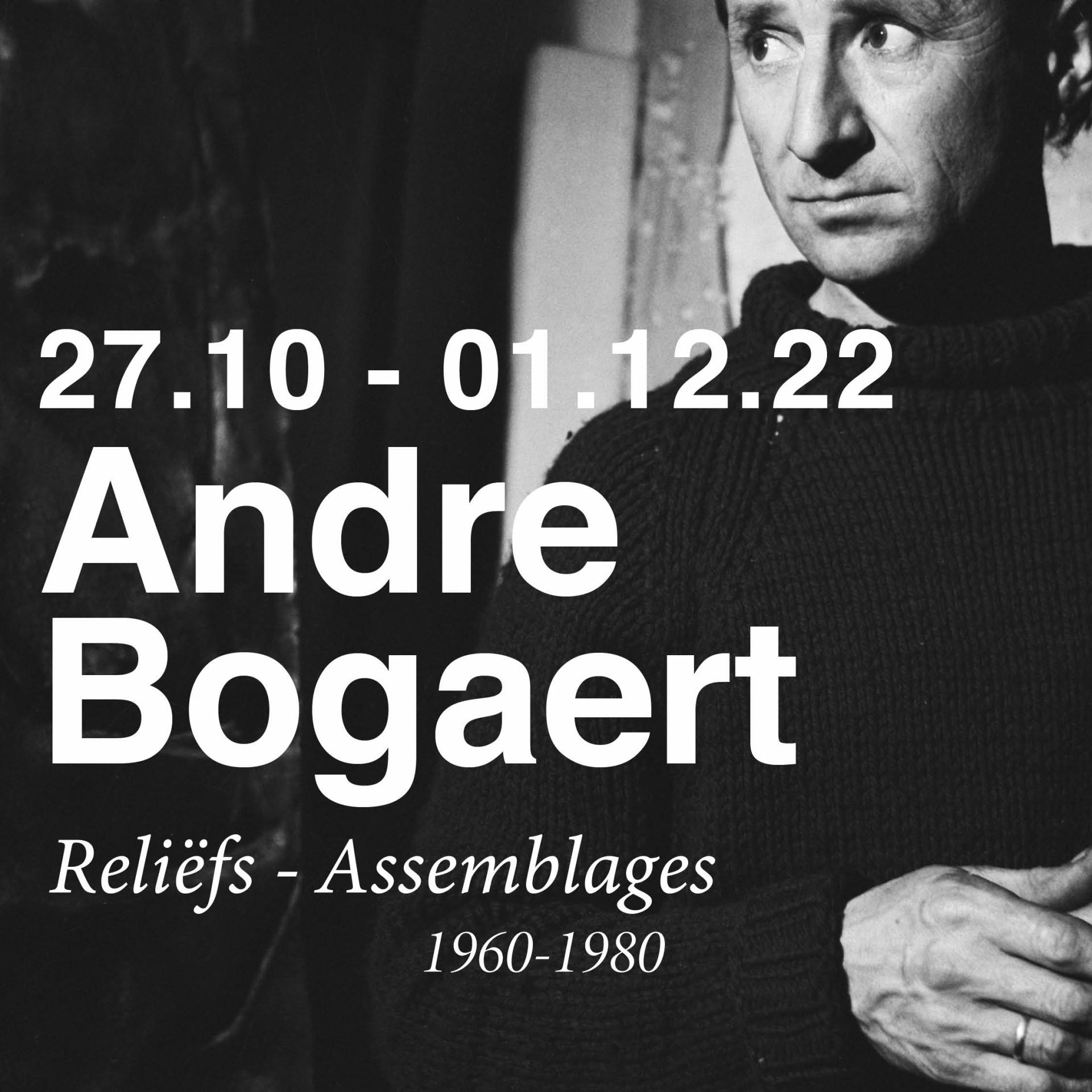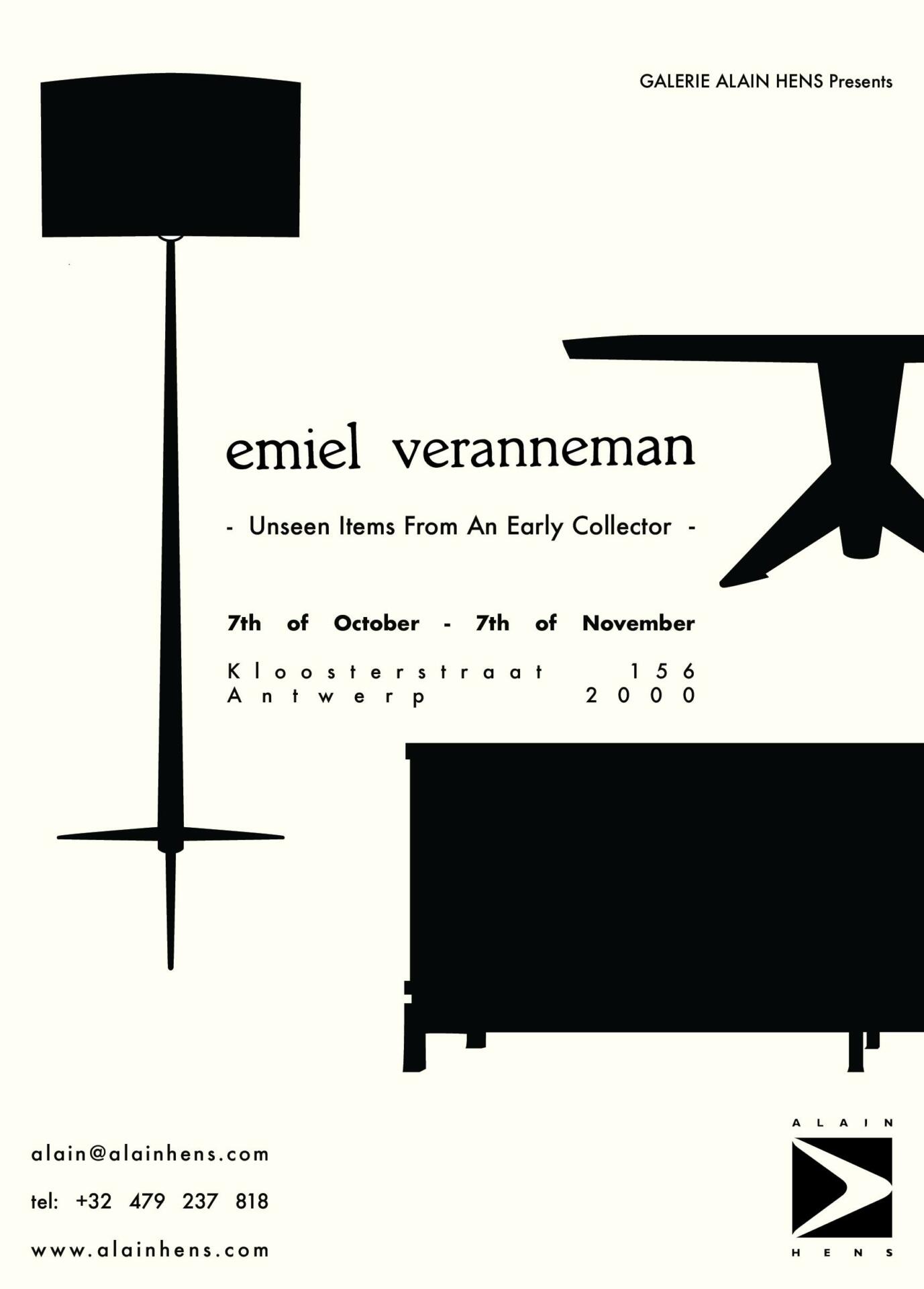Time for a Q & A moment with textile artist Mira Sohlén
– Is it carpet or is it tapestry ?
My tapestries go through the same working process as making tufted carpets. So in theory you could say that my Opus tapestry series are all individual mini-carpets assembled together and put on the wall.
– Why tapestries?
These tapestries can actually be seen as chapter one. For me, my tapestries are a process of improvisational shape study that I puzzle on the floor and later hang on the wall. For later it also seems interesting to me to design something that combines those two positions. I’m thinking about making a tapestry that melts all the way to the floor. I think it’s such a phenomenal idea that you could walk over an art object. You claim ownership, as it were, by walking over it. It’s something that intrigues me…
– Is there a reason why you chose the title Opus for the series?
I’ll tell you the whole story because it’s also linked to why I started this project. It all starts with my grandmother. She’s the one who taught me about textiles. While she was deaf and communicating with me through sign language. It fascinated me that when music was played in the background, she could feel the vibrations and dance along to the rhythm. Because one of her senses was gone, another became stronger. Opus in Latin means music composition; and for me, the tapestries refer to a visual form of music. Even when I think of the working process of my carpets, it is similar to the process of a music composer. The shapes can be compared to the different musical notes and beats, and the pattern in which they are assembled is where they find harmony. Also when I look at the end result I have the feeling of experiencing the sensation of music. There is something in the shapes that make you travel… If I would explain music to my grandmother, someone who never experienced music, I would show my Opus series.
– Do you have a specific work process? How do your tapestries come about?
The work process that I apply to each tapestry is of great importance. Each pieces is individually tufted. During the second part of the work process, I attach latex to the back of the wool parts. After that, I have to glue the corners of all particles individually. Because of this, I have to make tailor-made patrons for each shape. Last but not least, the back of my tapestries also consists of 100% wool. It is an enormously labor-intensive process and not to forget the wool also has to be shaved several times. This I do with a shaving machine as well as scissors. I like to work with my hands. It gives me the feeling that I am in contact with every part. In this way, I can enrich classical craftsmanship with my personal modern approach.
– Choice of materials?
Because of my experiences in the fashion industry, I prefer using high-quality materials. If you want to create something long-lasting and sustainable, make it really good. I prefer the finest wool to build up my tapestries.
– Sources of inspiration?
I like to be inspired by primitive sculpture, poetry, and all kind of non-conformist elements in nature and in life…
– What reaction are you trying to elicit from your audience?
By making my tapestries I develop my own language. I think the signature is important. I work very visually and would like people to see some kind of alphabet in my creations. A lot of people also say they recognize characters in my tapestries.
– Does tapestry serve any function?
If you look at the history of tapestry, is was not only a great heat and sound insultor; but it was also a very portable form of art. If your castle was under threat, one could make a really quick escape by just rolling up the valuable tapestry and run! In other words, tapestry is a very nomadic friendly art medium.
– Is there a reason for the specific color palette?
I like neutral colors: greens, browns… gentle colors. I also prefer to express myself in shapes and the tactility of my choice of yarns. Because of this, color is more likely to play a supporting role. Don’t forget that I like to experiment so who knows, maybe one day I’ll use brighter colors.

